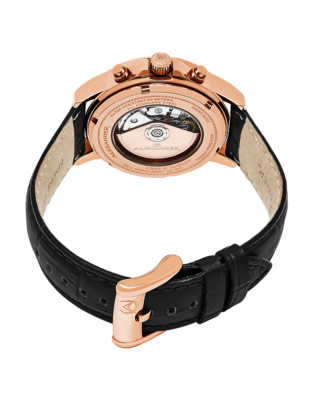Up until the 1770s, all watches required manual winding of the crown to work. Winding tightened the power reserve stored in the mainspring, which set the watch running.
Then, Swiss watchmaker Abraham-Louis Perrelet invented a self-winding design using an oscillating weight.
His design was a major milestone in watchmaking. The Geneva Society of Arts reported in 1777 that Perrelet’s design required the wearer to walk for about 8 minutes to fully wind the watch for 24 hours.
This ability to wind a watch through natural movement is how automatic watches work today—although there have been a number of other refinements since Perrelet’s day.
Namely, an automatic watch like Creon or Aigai has a 40-hour power reserve, so if you skip a day wearing or winding, you can still rely on your watch’s accuracy.


But watchmaking is a patient art. It wasn’t until 1923—a century and a half after the invention of the self-winding watch—that John Harwood designed the Bumper Watch.
Spring bumpers limited pivoting weights to a 180° swing to wind the mainspring.
- The bumper system wound the mainspring.
- The mainspring turned the gear train, transferring tension to the escapement.
- Releases from the escapement fed into the weighted balance wheel, which rotates back and forth at regular intervals like a pendulum.
- The balance wheel turned another gear that advanced the hands on the face of the watch.
Harwood’s bumper system stored 12 hours of power in the mainspring. An analog to Harwood’s bumper system eventually landed in in other wristwatches of the same era, namely the Rolex Oyster Perpetual.
Today’s automatic watches are more accurate and need less maintenance—but they’re not that different.
Polished springs, tiny screws, and interconnected wheels and gears trains still work in harmonic unison to keep time. Designs now are more resistant to temperature changes, have reduced contact point friction, and vastly improved mainsprings. Miniaturization and other incremental improvements have made room for complications, like chronographs, counters, and more.
But the original technology of automatic watches was—and is—pretty magnificent to start.
SHOP AUTOMATIC WATCHES NOW

